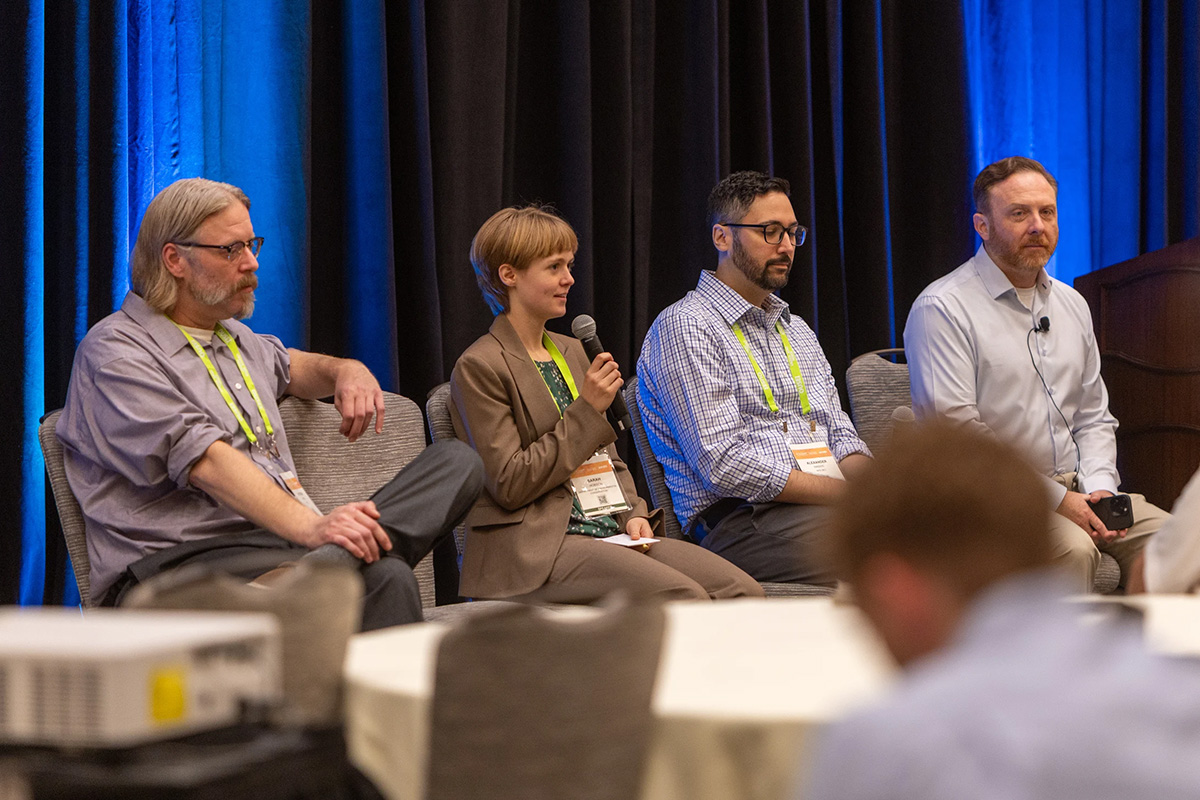
At the Electronics Recycling Coordination Clearinghouse workshop, state and industry voices backed a shift from weight targets to practical convenience rules, with Oregon’s 2026 dual PRO model emerging as a key test statewide. | Photo by Big Wave Productions
State and industry leaders at the 2025 E-Scrap Conference signaled growing support for moving electronics recycling programs away from weight-based targets and toward practical convenience standards, reflecting aging state laws, lighter devices and uneven access across large regions.
The workshop, hosted by the Electronics Recycling Coordination Clearinghouse (ERCC), also highlighted Oregon’s 2026 model that will test how two producer responsibility organizations (PROs) can coordinate education, site information and data systems under one statewide framework.
Jason Linnell, executive director of the National Center for Electronics Recycling, opened with context on why programs diverged and why change is on the table.
A federal approach was debated years ago but never materialized, which left states to build their own systems. Today, 25 states and the District of Columbia have some form of electronics recycling program, many now 10 to 20 years old, with few new laws passed in the last decade. That patchwork includes different product scopes, different program years and different ways to count performance, which complicates compliance for manufacturers and their service partners and creates confusion for residents.
The state panel underscored how design choices shape results on the ground. In New York, manufacturers can technically meet a convenience requirement with mail-back service, yet that tool delivers very little weight for large items. “Less than 1% of our weight comes from it,” said Alexander Naidoo of the New York State Department of Environmental Conservation, who noted that residents still need workable options for televisions and other bulky devices.
Vermont’s program, described by Sarah Hobson of the state’s Department of Environmental Conservation, emphasizes access by funding a state-managed standard plan that pays collectors, transporters and recyclers, with manufacturers registering and paying the state.
Matthew Web, E-Waste Program assistant manager at the Minnesota Pollution Control Agency, said the state’s long-standing household hazardous waste network already places about 95% of residents within 15 miles of a drop-off site, which meets a common convenience yardstick even though the statute centers on manufacturer obligations.
A new ERCC survey of state agencies, manufacturers, recyclers and compliance organizations found agreement on the pain points and on the direction of travel. States cited difficulty obtaining responses from small or international brands, tracking brand lists and validating reported weights. Manufacturers pointed to registration fees, complex reporting and the burden of varied definitions and calendars.
Recyclers and compliance organizations highlighted contract instability, heavy audit loads and the challenge of maintaining convenient collection networks when local hosts change or volumes shift. Many respondents endorsed pragmatic alignment on product scope, covered entities and program years, while acknowledging that full harmonization would require legislative changes in many states.
The industry panel framed targets as helpful for budgeting yet increasingly out of step with modern waste streams and market incentives. Participants pointed to years when available pounds were scarce in some states and to years when pounds exceeded obligations in others, which pushed programs to shut down early or scramble late in the cycle. Panelists also warned that penalties set far above the cost of compliance can distort markets and they urged states to ensure that audit and reporting requirements are effective without duplicating work across multiple parties.
Oregon’s 2026 framework drew particular attention because it may offer a test of coordinated back-end systems without a federal reset. Under that law, manufacturers will work through PROs that must coordinate on public education, site lists and data. Stakeholders said that approach could preserve state control while introducing efficiencies that make compliance easier to manage and easier to explain to the public.
Despite broad interest in alignment, speakers cautioned against assuming a simple path. Opening multiple statutes at once is difficult and harmonization can raise the question of which standard becomes the baseline. Several panelists noted that policy momentum in related areas, including batteries and packaging, offers lessons for electronics programs but also adds to the compliance load for manufacturers that sell across state and national markets.
The near-term agenda that emerged from the workshop focuses on access, clarity and predictability. States are reassessing how to define convenience, how to keep mail-back in its proper role and how to calibrate penalties so they support stable collection rather than encourage off-ramps. Program managers and recyclers are pressing to streamline audits and data requests, while manufacturers are working to maintain compliance as institutional knowledge turns over. Oregon’s rollout will offer a concrete test of whether coordinated PROs can deliver broader access and clearer communication under a modernized set of rules.
More stories about EPR/stewardship